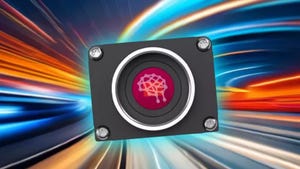Solid Edge Synchronizes 3-D Modeling
September 10, 2009


Golden Mousetrap 2009 Winner logo
While the merits of history-free vs.history-based or parametric CAD systems have been debated for years, 2009 wasthe year vendors made huge strides in bridging the benefits of both modelingtechnologies in one product. Perhaps no 3-D CAD company did as much to advancethe trend as Siemens PLM Software with the introduction of SynchronousTechnology, its next-generation modeling approach.As part of Siemens' Velocity Series ofsoftware, Solid Edge with Synchronous Technology delivers the speed andflexibility typically associated with direct modeling tools with the precisecontrol and built-in intelligence of dimension-driven or history-based CADprograms. By combining the "best of both methods," Solid Edge with SynchronousTechnology delivers what Siemens officials describe as history-free,feature-based modeling - a modeling approach that promotes faster adoption of3-D technology, while requiring less retraining for casual users of CAD.
Withpopular history-based 3-D CAD systems, operations are captured in the orderthat they're created, adding a layer of intelligence and automation to modelcreation. Yet any edit to a single feature demands subsequent features to beregenerated, a process that can slow performance and eliminate much of theflexibility of direct modeling programs. Direct modelers, on the other hand,offer easy creation of models, yet deliver less predictability around editingsince the lack of history means changes can only be applied to a very specificpiece of geometry.
BecauseSynchronous Technology, which is also available in Siemens' NX higher end CADtool, captures features independently, it preserves intent, but eliminates theneed to regenerate entire models when edits are made to a single feature. Thisresults in much higher edit performance and less feature cleanup, allowingusers to complete engineering change orders much faster, while facilitating theoverall design experience.
www.plm.automation.siemens.com
About the Author(s)
You May Also Like





